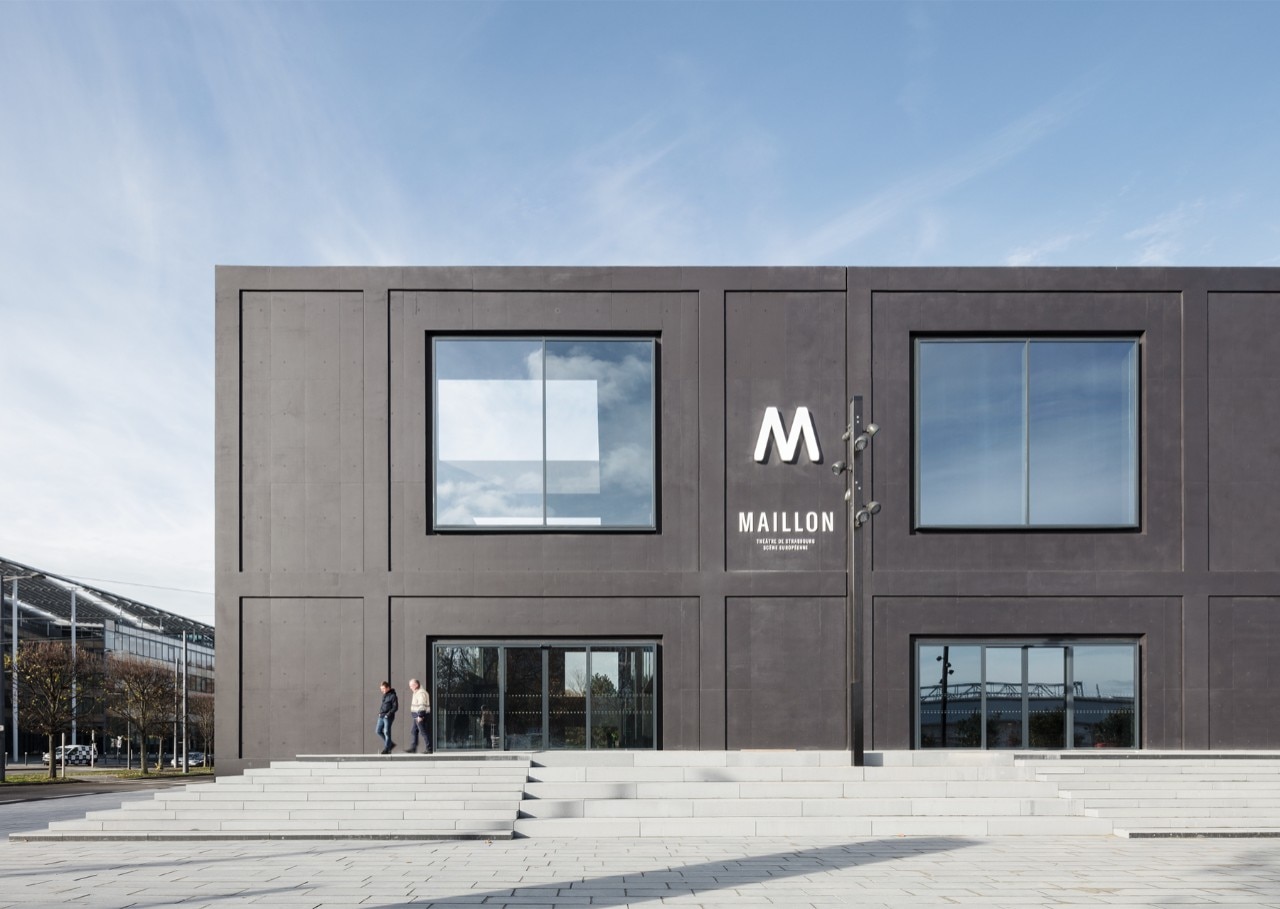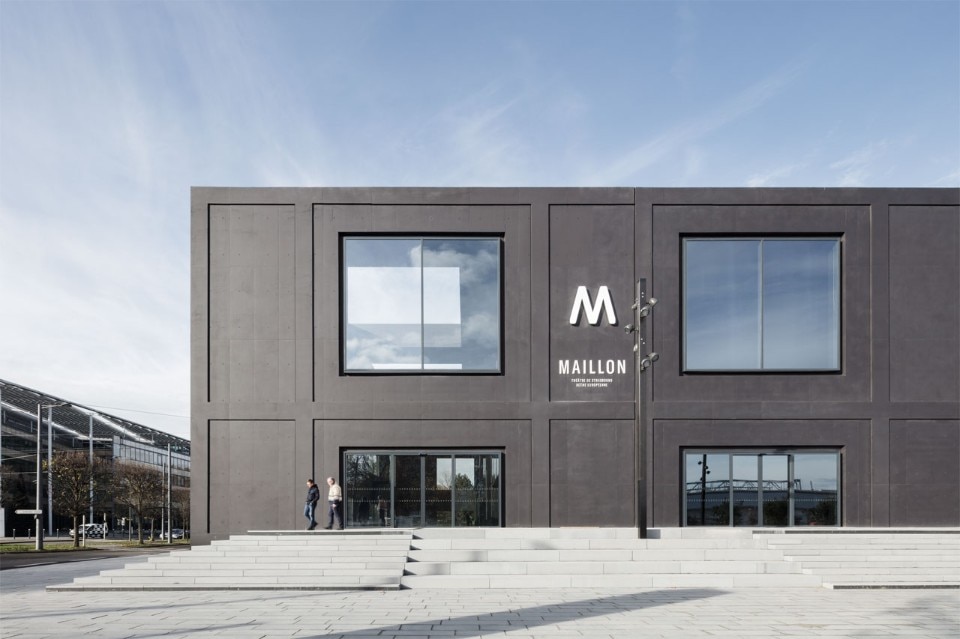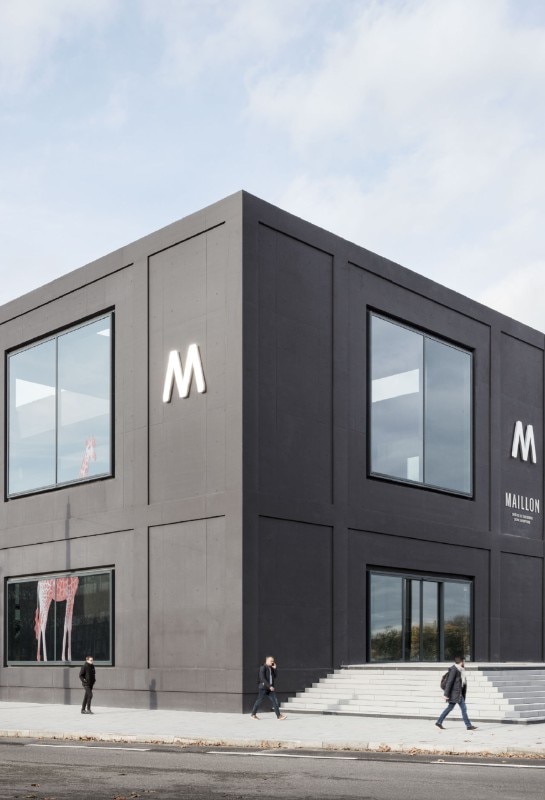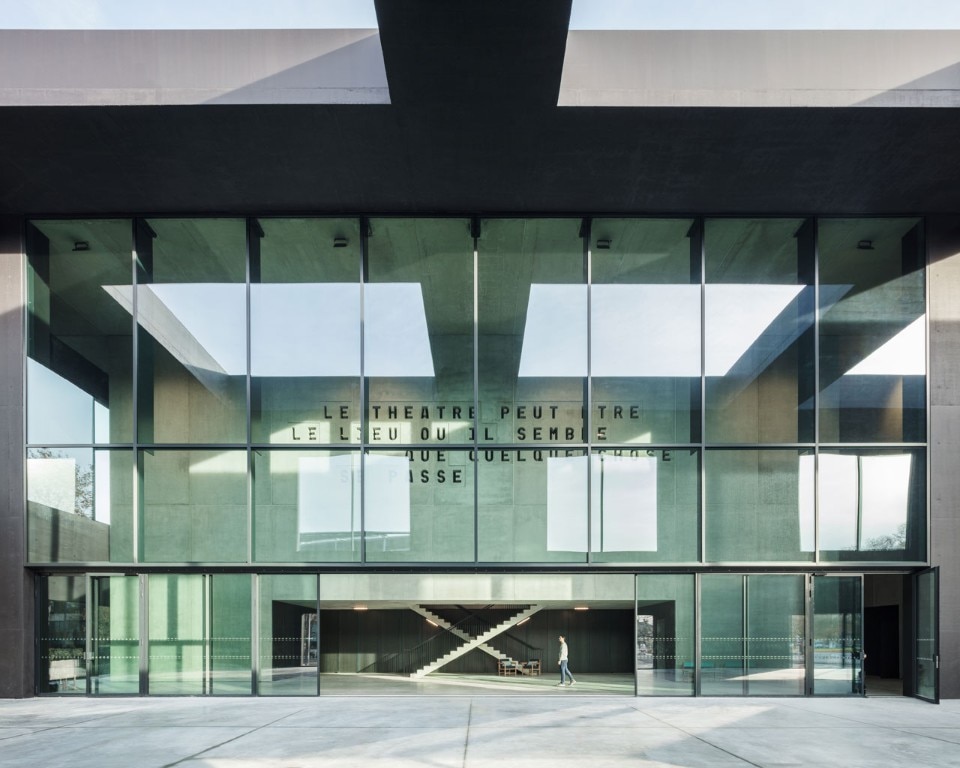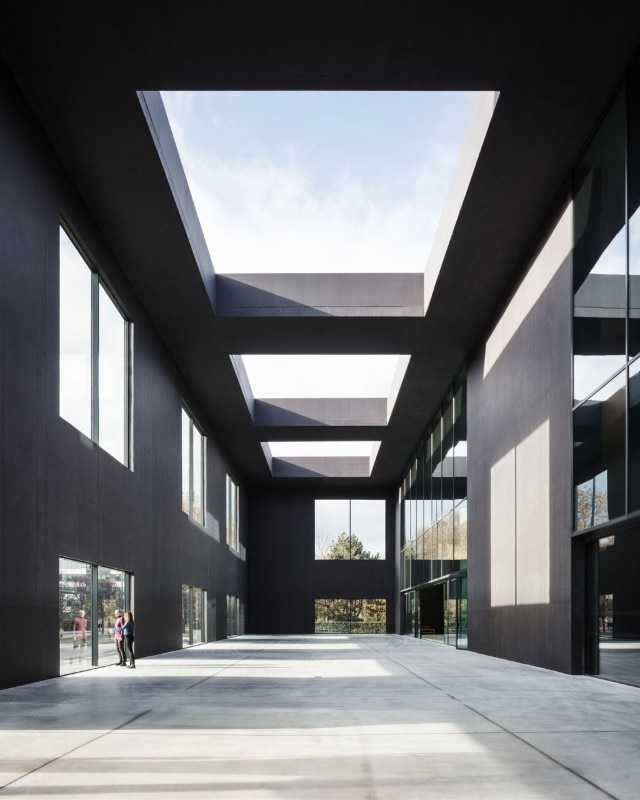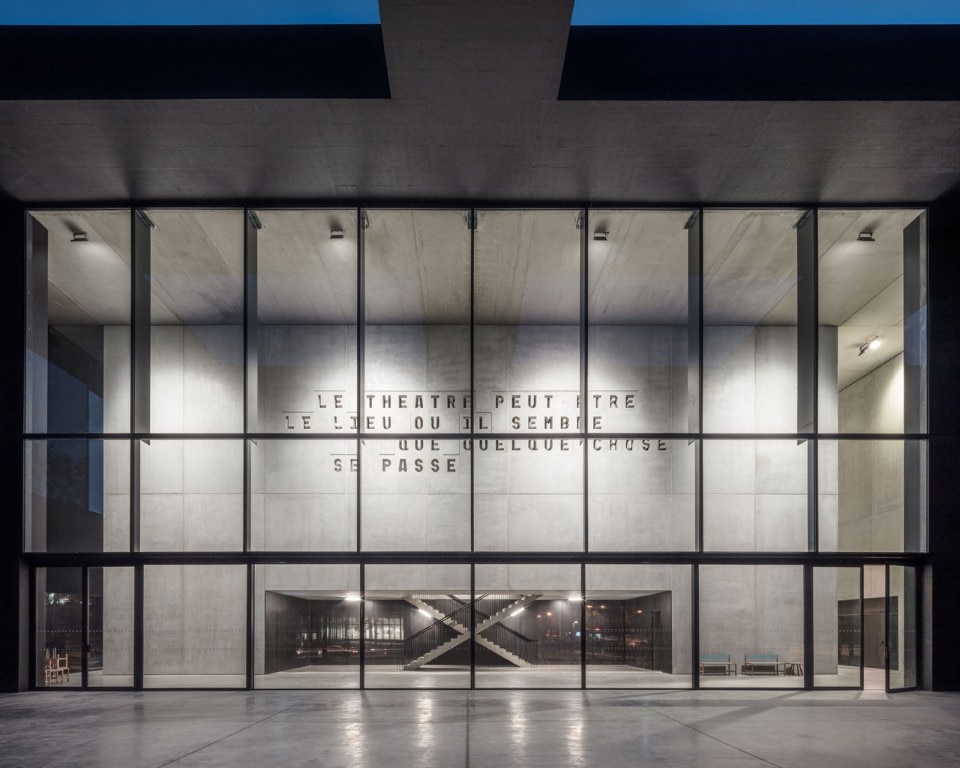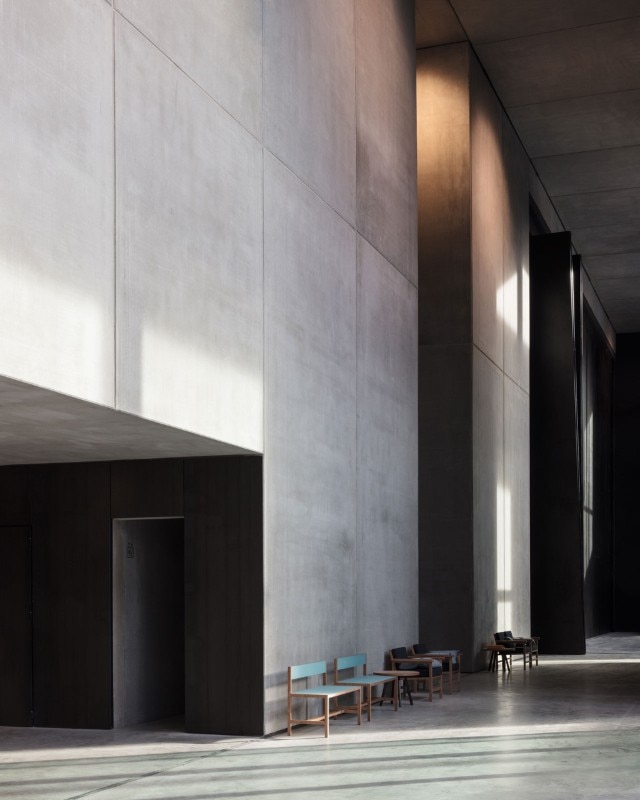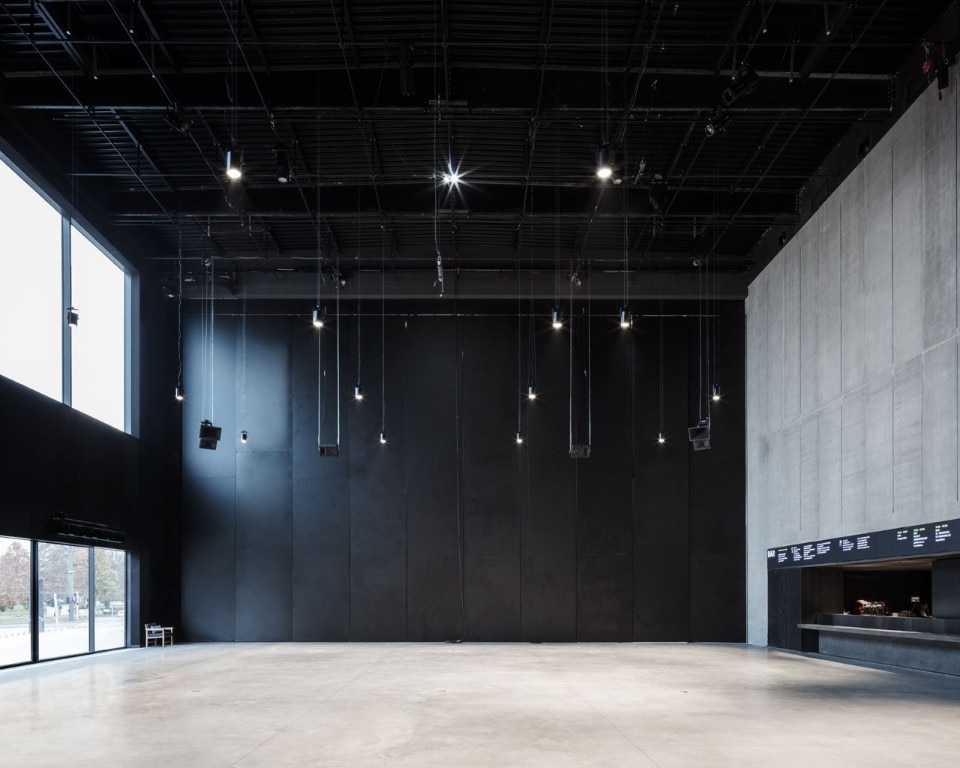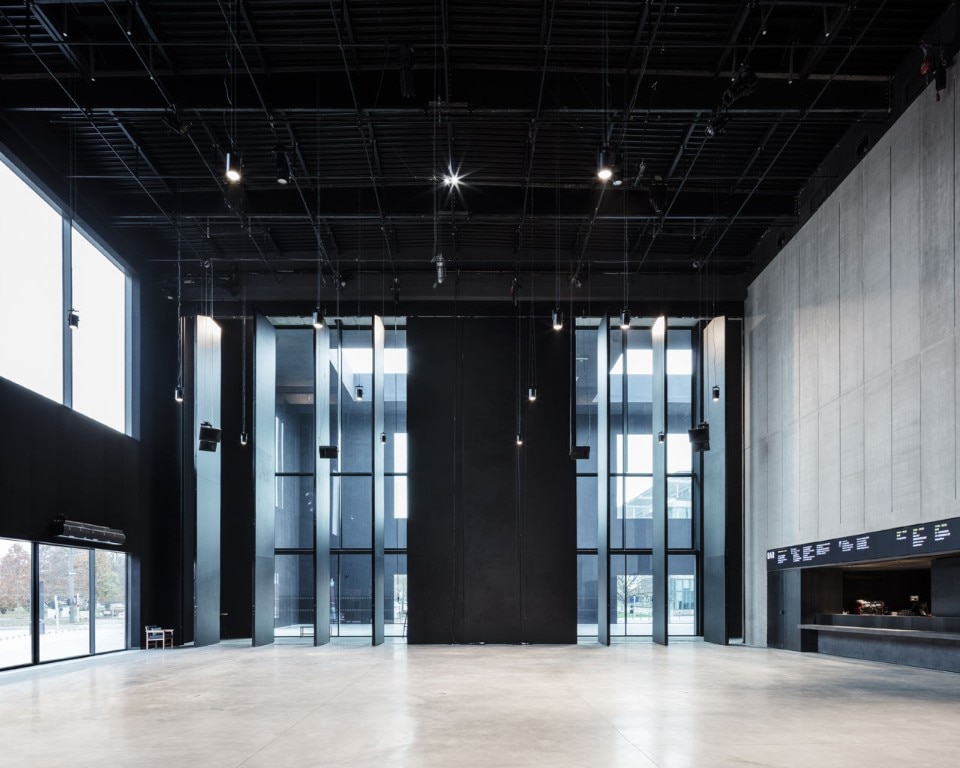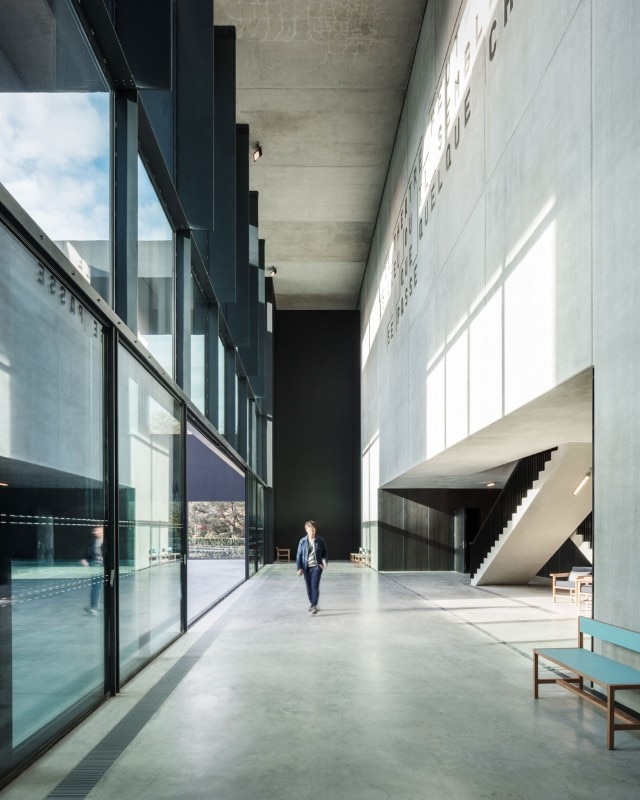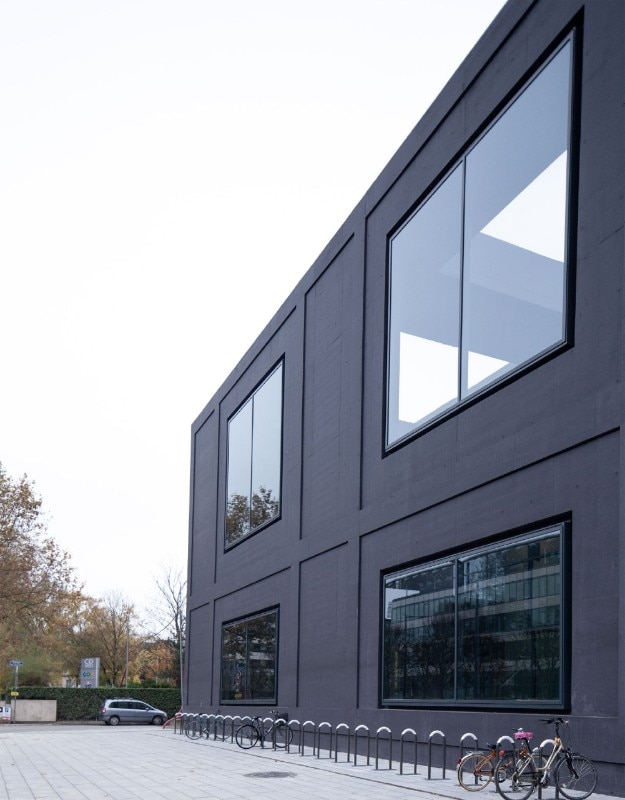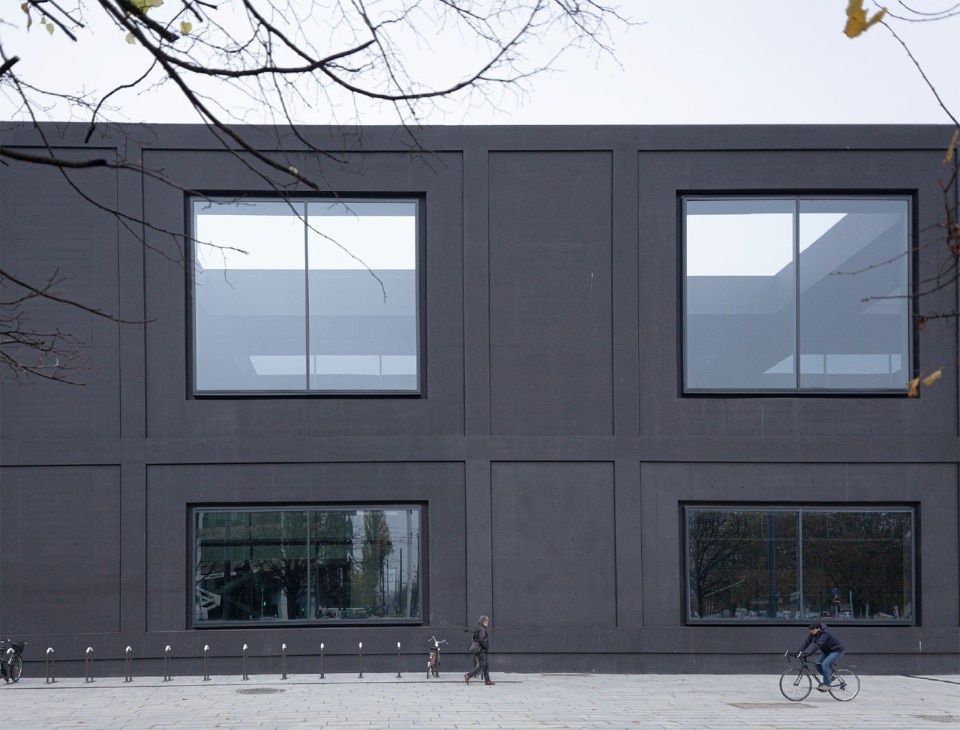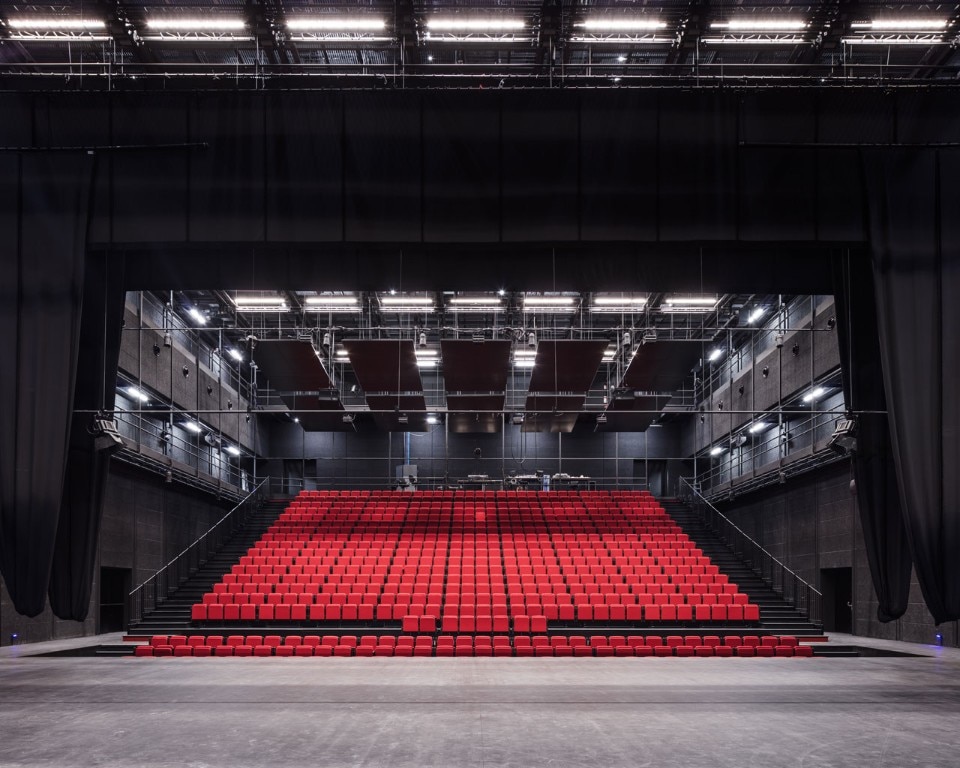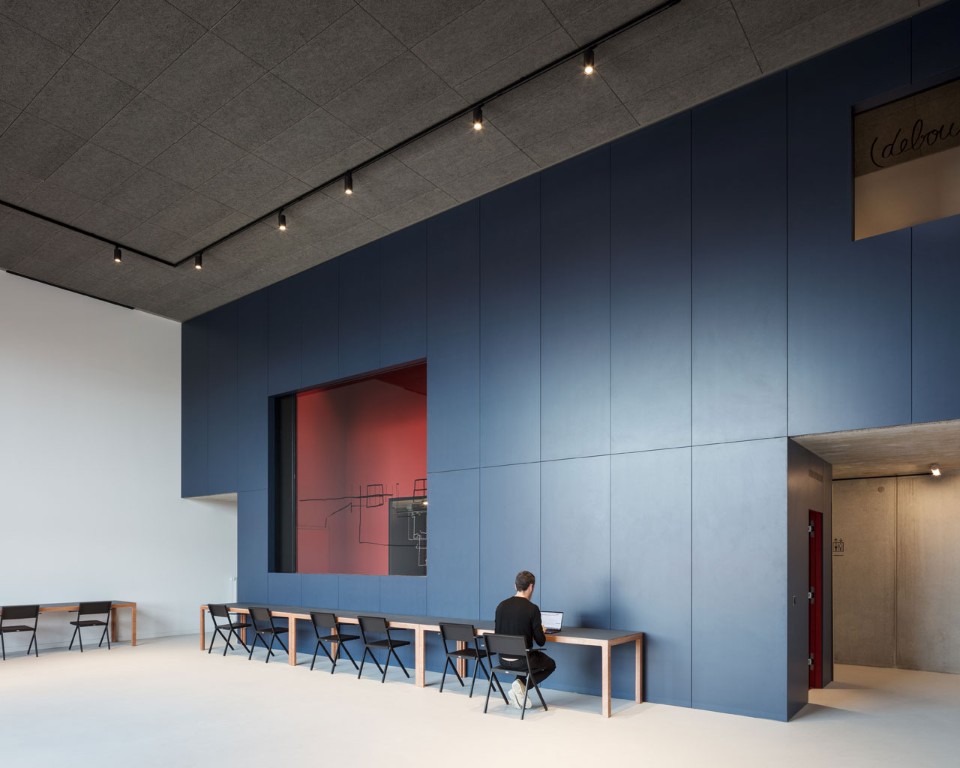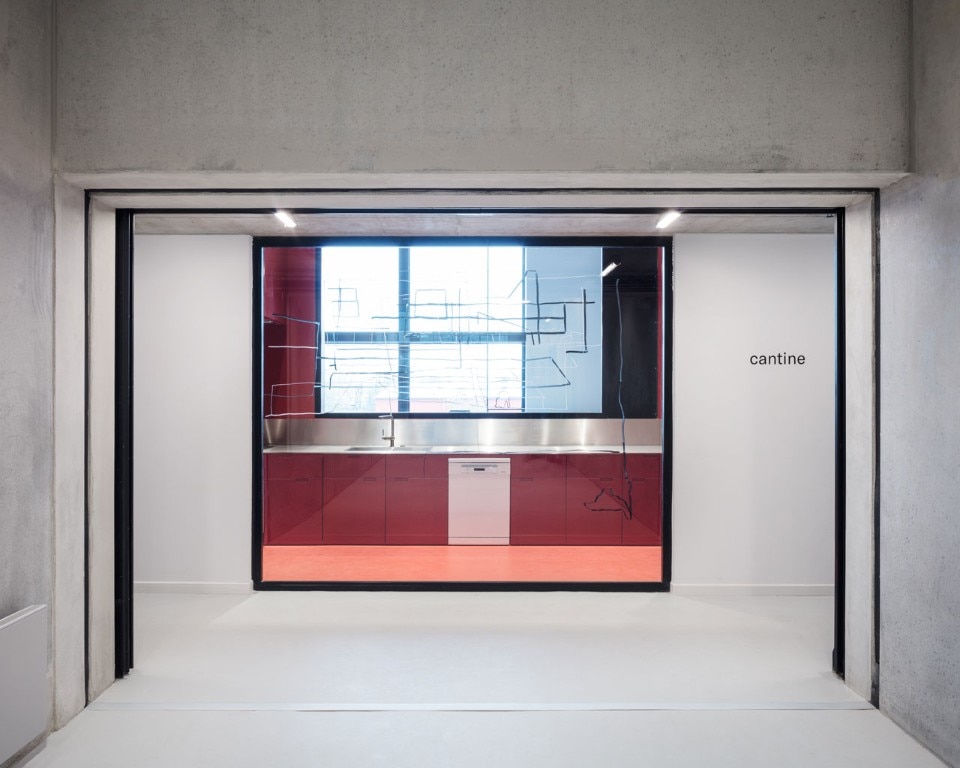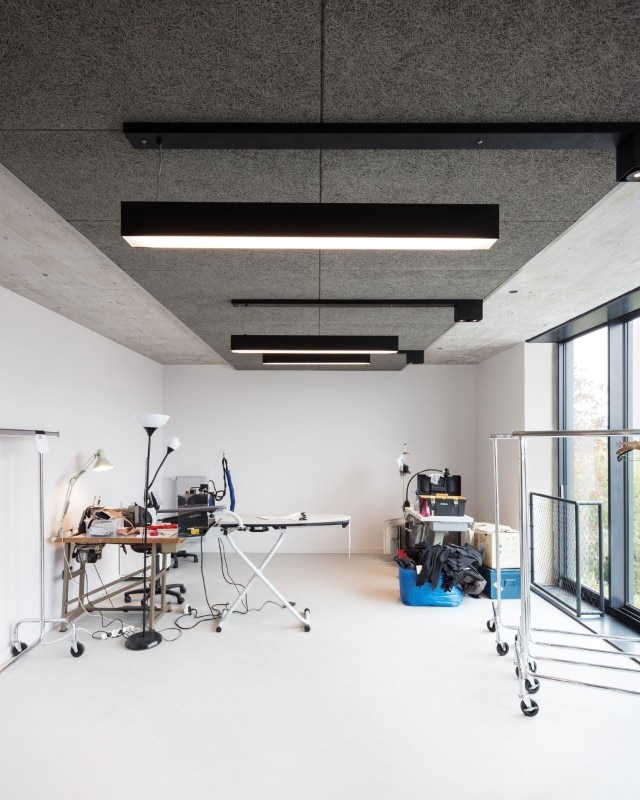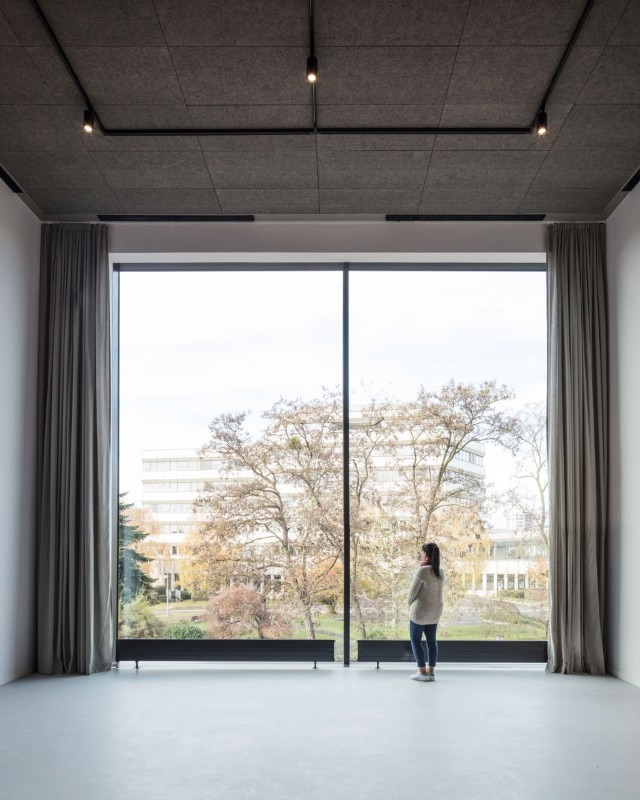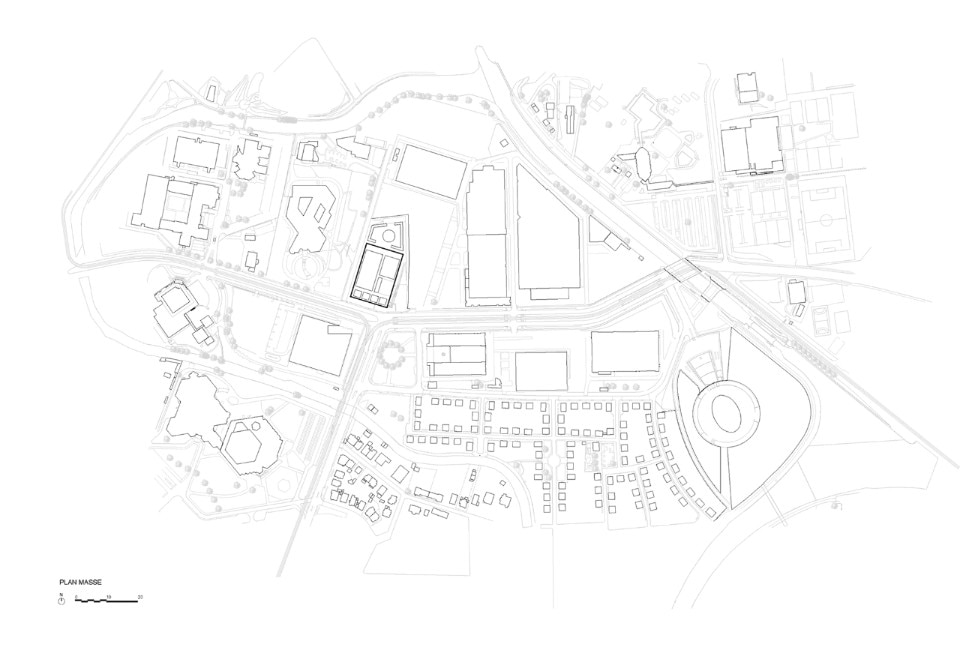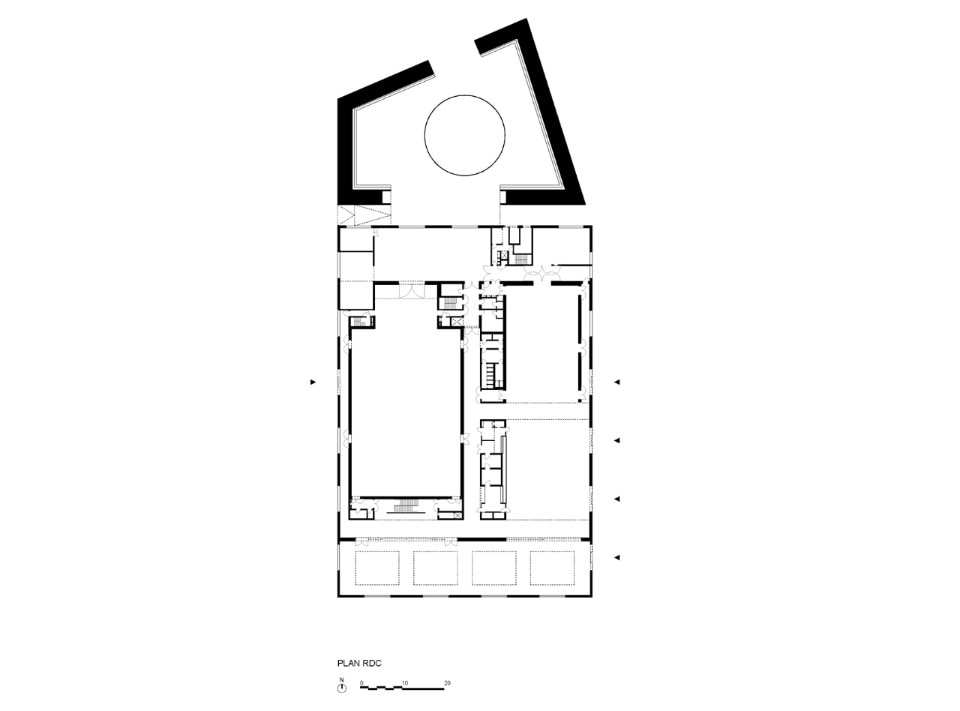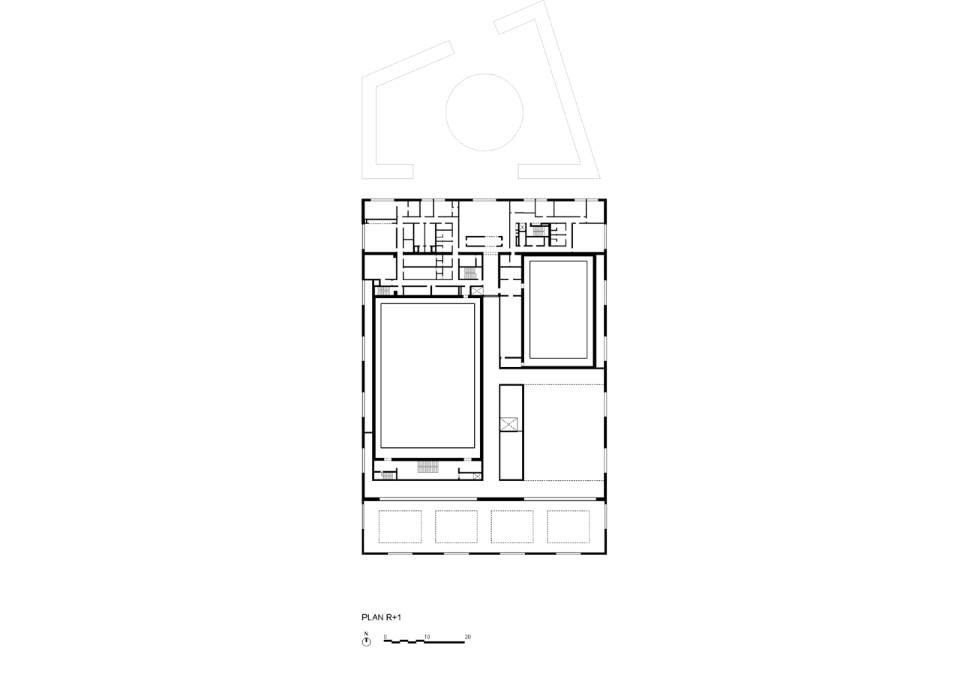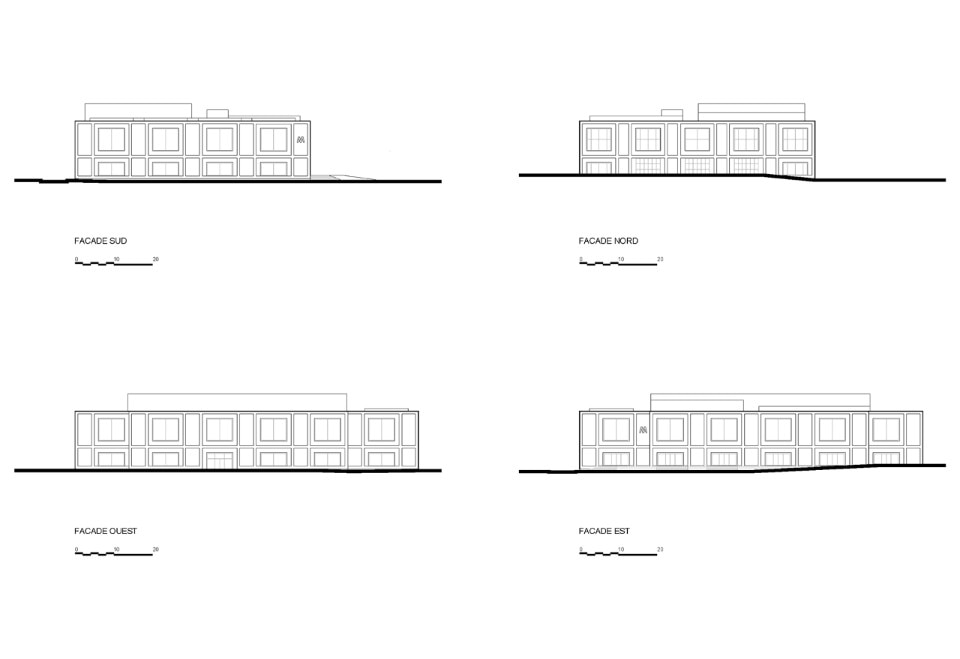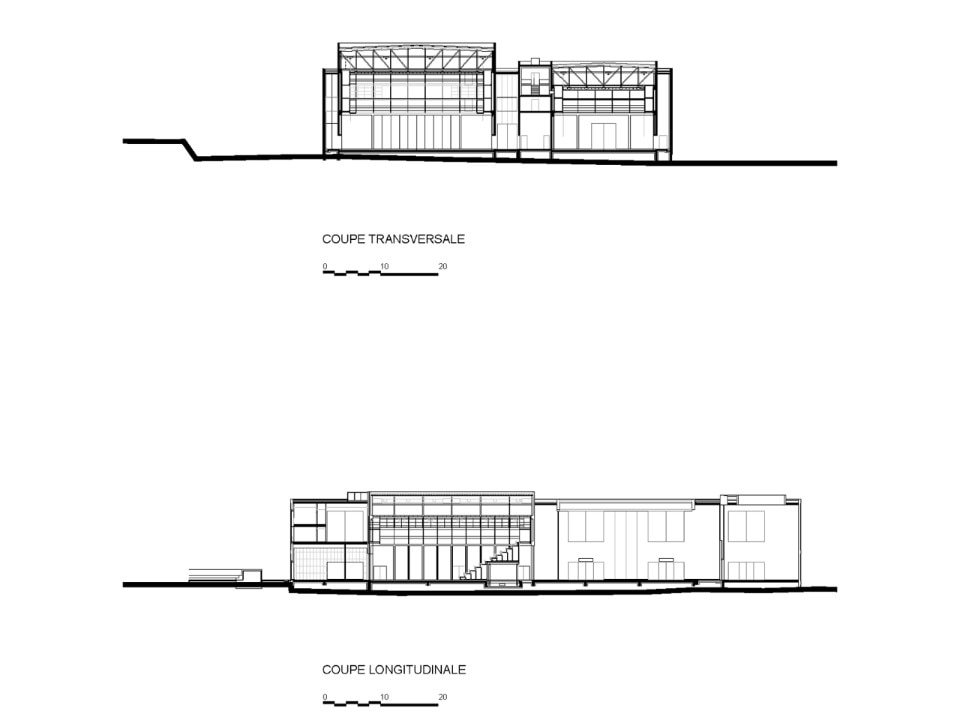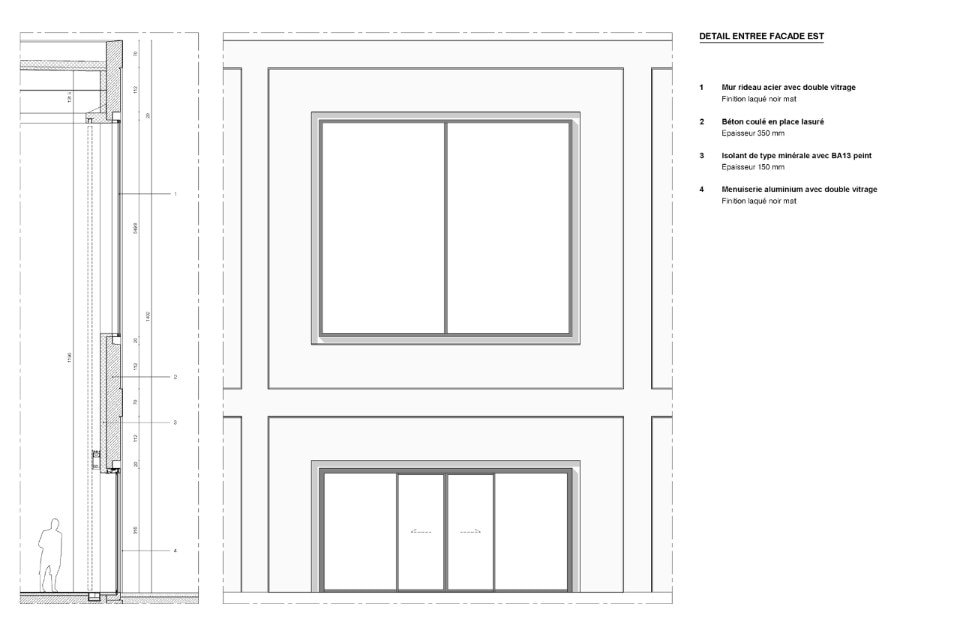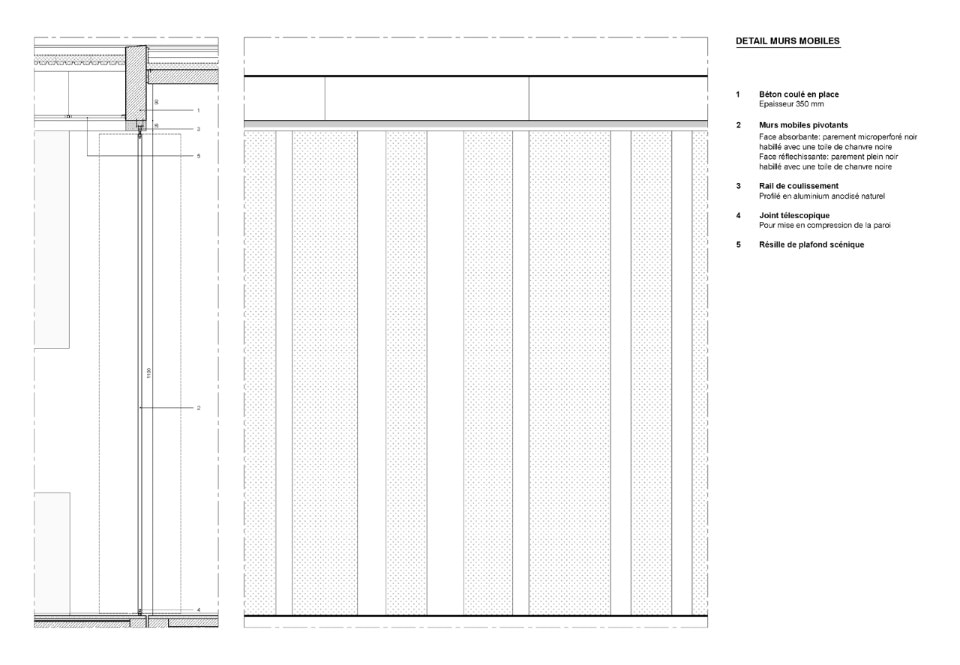The Théâtre du Maillon is located in the Wacken district of Strasbourg, fifteen minutes from the historic centre and next to the European Parliament. This suburban area is changing quickly, with new residential buildings under construction all around. The theatre from the outside does not look like a theatre at all. It is a black cube, apparently anonymous, when seen from afar. It could be an office building or any factory. No signage indicates its real function.
It is reached by climbing large concrete steps – the complex is slightly elevated to respond to potential flooding in the area – and there is no central entrance. To figure out what the entrance is, I walk slowly around the glass perimeter walls and wait for a motion sensor to let me in. After a few meters, two glass walls open and I enter immediately, without the certainty of having intercepted the right entrance. I find myself in a large lobby, 14 meters high, industrial but warm and bright, completely finished in polished light concrete and in stark contrast to the dark tone of the facade.
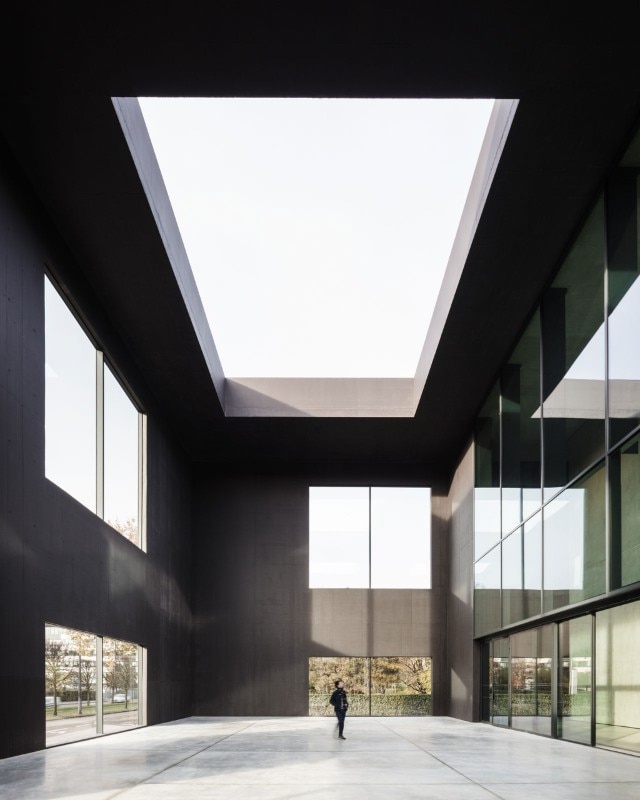
Already in the vicinity of the volume you can perceive the many surprises that are hidden in the building and you can see a monumental inner courtyard, with openings in the ceiling that let in the rain of late November, like a contemporary impluvium. Waiting inside is the Italian architect Umberto Napolitano, co-founder of the award-winning LAN Architecture studio, ready to accompany me in every meander of this new creature, which will see its final completion in a month and which has been already officially inaugurated last week with a jubilation of shows for all ages and with the ribbon cut by Emmanuel Macron, who “in a moment has grasped all the features of the project and gave the impression of being the greatest expert in the neighborhood and the theater: a real orator,” says Napolitano smiling.
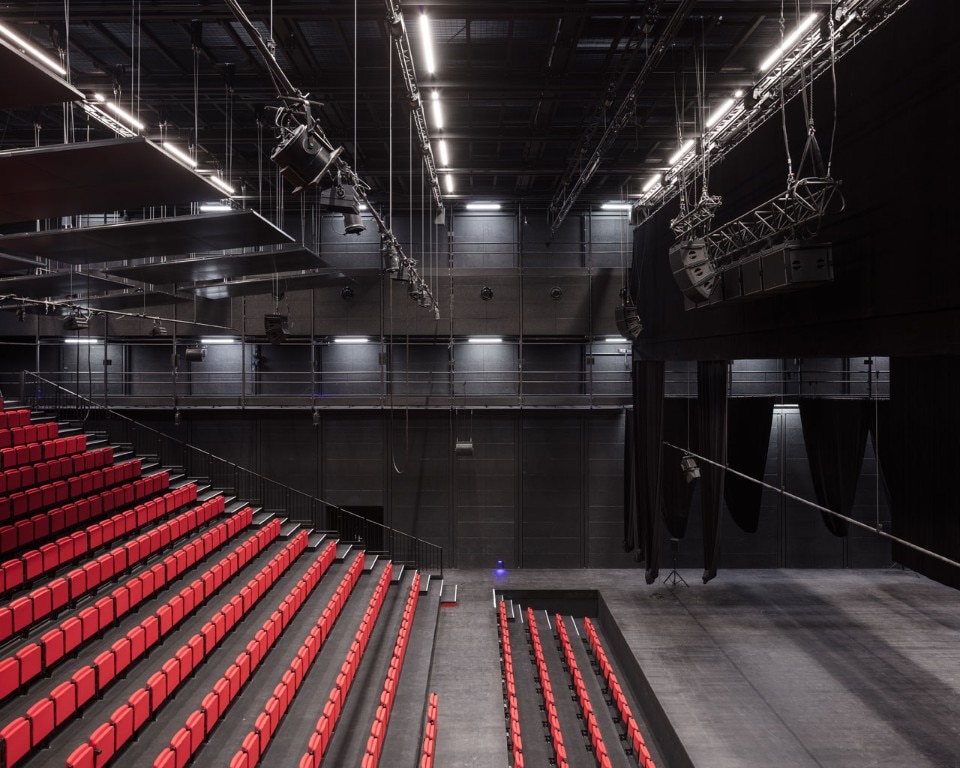
Maillon in French means “connection”, and the new headquarters designed by LAN is exactly this: connection between the rooms, between the inside and outside, between the theater and the city, between the viewer and the show. “We asked ourselves how to force a space to the maximum”, explains Napolitano. “How to work on the idea of the limit, as something that is thicker. The limit between the interiors and the exterior, between one room and another, between the actors and the audience. Each time this limit takes configurations, this frontier becomes very porous in some cases and is very clear in others. The idea of giving material to this frontier, whatever the space, has pushed us in various directions.”
When we won the competition we decided not to make a theater, but a theater factory
Théâtre Maillon was born in 1978, after the spread of the movie theatre, when French politics used theatre to animate and bring culture to the suburbs. In 1999 it was transferred to a hangar at the Wacken International Fair, and from there it became a legend. A place whose industrial nature has given rise to such avant-garde programming that it has attracted the great protagonists of contemporary theatre, starting with Romeo Castellucci, director of Societas Raffaello Sanzio, encouraging them to change the configuration of the theatre every time. Because of the fair, then, every year in June it was forced to free up space. Now the Maillon is part of a European network of the most experimental theatrical programming, under the guidance of the Franco-German director Barbara Engelhardt. The old theatre at the fair has been demolished to be reborn in the latter signed by LAN.
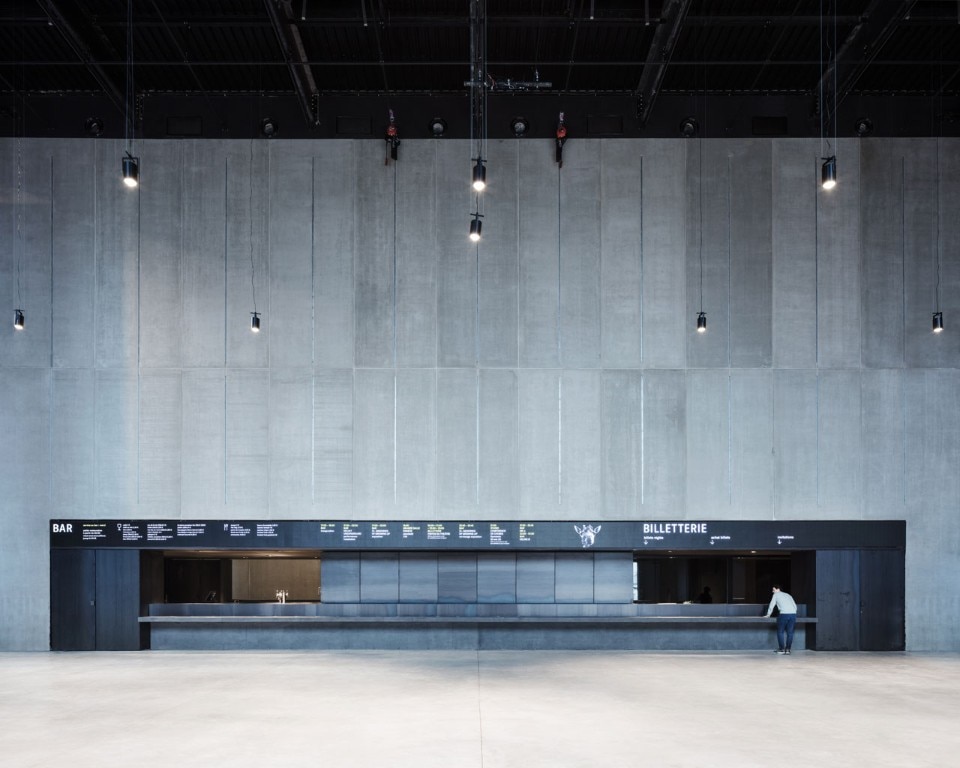
“When we won the competition we decided not to make a theater, but a theater factory,” says Napolitano. “From this idea we have created a facade that is the same everywhere, no longer has main entrances, it becomes generic. Giving a lot of light and the same space to the whole theatre, with a lots of volume. We worked on the void, in the hope that the void itself was the ‘potential’ space.” Even before concentrating on the urban context, the architects tried their hand at contemporary theatre, analysing its most widespread forms today, from street shows in which the public follows the actors, to dance shows, to collateral exhibitions of artists who work between cinema, theatre and art.
“The spaces had to respond to the classical parameters in which theatres are totally frontal, double-fronted, three-fronted, four-fronted, all flexible to the maximum of what can be done today, and at the same time they all had to be able to accommodate the performances.” Basically, each area of the theatre, from the lobby to the semi-covered patio, is equipped to host one or more shows and can interconnect with the other, creating infinite configurations, thanks to opening windows and huge disappearing soundproof panels, potentially opening up to the city around it.
“We wanted to get out of the traditional Italian theatre scheme with lobby, auditorium and backstage.” The theatre, in short, comprises on the ground floor two auditoriums (the largest can accommodate up to 714 seats), a lobby with bar and double-faced ticket office to reconfigure if necessary and two courtyards, one of which is semi-closed. On the first floor are the administrative offices, other rooms for events or yoga and dance classes, the dressing rooms and the “artists’ space” with an open-plan kitchen and a multifunctional room. The paths on the ground floor are indicated by a monitor signage that can always be reprogrammed according to the configuration of the shows day by day. The seats in the hall – made by a specialized Italian company – meet the highest acoustic requirements and are telescopic and mobile. The finishes and floors – made by French and German companies – are designed to give the best possible soundproofing performance.

The furniture of the lobby, on the other hand, is part of a parallel process of self-construction, where the architects have provided the theater with technical drawings to download and self-produce. LAN has designed a wide variety of elements, from armchairs to rocking chairs and tables, while the realization (simple CNC laser cutting of the wood and assembly) is left to the theater, which decides which and how many pieces to produce if necessary. The process is part of the MAKE A project, a true manifesto for the democratization of furniture that surpasses the world of distribution and transforms the customer into a designer.
The only limit that seems to emerge from this ouvre is the inexhaustible spatial possibilities that the imagination of directors will be able to conceive to get the most out of this place. Maillon represents the synthesis of that great scenic machine made up in forty years of history, which legitimizes and challenges the potential of theater today. Proof of this was the representation of La Pasionaria, a contemporary dance show by the Spanish company La Veronal, directed by Marcos Morau, which narrated a dystopian world with a frontal set design and robot dancers who control the births of children in a retro-futurist environment marked by techno beats, pastel colours and neon lights.
- Project:
- Maillon Théâtre de Strasbourg – Scène Européenne
- Program:
- theatre
- Architects:
- LAN Architecture
- Location:
- Strasbourg, France
- Team:
- Umberto Napolitano, Benoit Jallon – Francisco Martinez, Dorothée Riou, Margaux Desombre, Marcello Orlandini, Marina Bedina
- Scenography:
- Michel Fayet, Ludovic Hallard, Patrice Buniazet
- Engineering:
- Terrel Group
- Structures:
- Batiserf
- Area:
- 7,017 sqm (1,044 sqm large auditorium , 484 sqm small auditorium, 491 sqm hall)
- Cost:
- € 20M
- Completion:
- 2019


